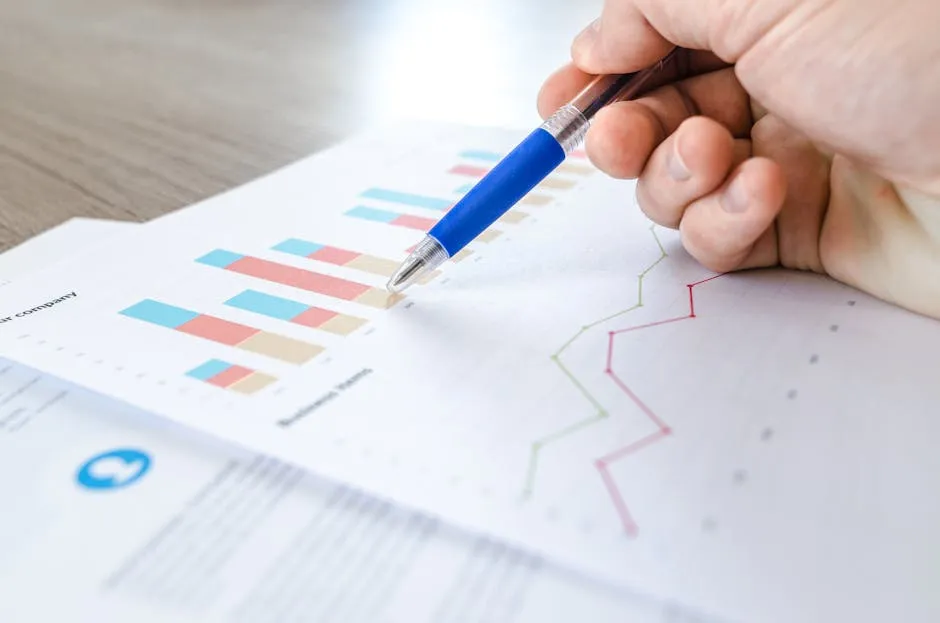Introduction
Statistical questions are the backbone of data analysis. They aim to uncover patterns, trends, and variabilities within datasets. Unlike simple queries, statistical questions anticipate a range of answers. They aren’t just fishing for a single fact; they’re more like treasure hunts for data.
Understanding statistical questions holds significant value across various fields. In business, they help analyze consumer behavior. In healthcare, they inform treatment effectiveness and patient satisfaction. Education systems utilize them to assess student performance and preferences.
This article aims to provide a thorough understanding of statistical questions. We will explore their characteristics, how they differ from non-statistical questions, and share some practical examples. Get ready to equip yourself with knowledge that will transform the way you approach data!

Understanding Statistical Questions
Definition of a Statistical Question
A statistical question is designed to anticipate variability in responses and requires data collection for analysis. For example, asking, “How many hours do students study each week?” leads to a variety of answers based on different students. This contrasts sharply with a non-statistical question, like “What is the capital of France?”—an inquiry with a definitive answer.
Statistical questions stem from the expectation that data will not yield a single outcome. They often invite exploration and subsequent analysis. Analyzing data gathered from these questions can lead to meaningful insights and informed decisions.
To clarify further, let’s consider more examples. A question like “What are the heights of students in our class?” anticipates a range of answers because each student has a different height. On the flip side, “What color is the sky?” is not statistical; it’s a fixed fact, ripe for a one-word answer: blue!
In essence, the key traits distinguishing a statistical question are:
- Variability: They predict different answers.
- Data Collection: Gathering data is essential.
- Analysis Potential: They invite further exploration and interpretation.
Understanding these nuances is crucial in both academic and professional environments. It empowers you to ask the right questions, collect pertinent data, and derive valuable insights, making statistical questions a crucial component of informed decision-making.

For those looking to dive deeper into the world of statistics, a great resource is Statistics for Dummies. This book breaks down complex concepts into easy-to-understand language, making it perfect for beginners and seasoned statisticians alike!
Key Features of Statistical Questions
Anticipation of Variability
Statistical questions are like those friends who never quite give you a straight answer. They thrive on the unpredictability of life! When you ask a statistical question, you’re not just looking for one answer; you’re ready for a range of responses. For instance, consider the question, “What is the average height of students in a class?” This question anticipates variability because every student isn’t the same height. Some may tower above others, while some might be more petite. The beauty lies in the differences.

Need for Data Collection
Imagine hosting a dinner party but only inviting your pet goldfish. That’s what asking a statistical question without data collection feels like! Statistical questions require gathering data from different sources or populations. Whether it’s through surveys, experiments, or observations, you need a variety of responses to paint a complete picture. For example, if you want to know how many hours students spend on homework each week, you must collect data from various students. Without this step, you’re left with just an empty plate—no delicious insights to savor.
If you’re interested in the methods behind data collection, consider picking up How to Measure Anything: Finding the Value of ‘Intangibles’ in Business. This book provides practical insights into measuring seemingly unquantifiable factors, making it essential for any data analyst.
Potential for Analysis
Once you’ve gathered your data, the fun really begins! Statistical questions open the door to analysis, allowing you to explore, summarize, and interpret the information collected. Think of it as a treasure chest of insights waiting to be uncovered. You can calculate averages, identify trends, and even make predictions based on your findings. For instance, analyzing the data on student homework hours can help educators understand workload impacts. So, statistical questions not only invite variability and require data collection but also lead to meaningful interpretations that can influence decisions and strategies.

To enhance your analytical skills, consider reading The Art of Statistics: Learning from Data. This book teaches you how to think like a statistician and apply statistical reasoning to real-world problems.
In summary, statistical questions are characterized by their anticipation of variability, the necessity for data collection, and the potential for in-depth analysis. They are the key to unlocking a world rich with insights, making them essential tools in any data-driven endeavor.
Comparative Analysis
| Statistical Questions | Non-Statistical Questions |
|——————————————————–|———————————————–|
| Expect variability in answers | Have fixed, definitive answers |
| Require data collection from multiple sources | Do not require data collection |
| Allow for analysis and interpretation | Lack potential for analysis |
| Elicit a range of responses | Yield a single answer |
Asking statistical questions in research and data analysis opens the door to a treasure trove of insights. These questions allow researchers to gather data that can reveal trends, correlations, and unexpected patterns. For example, a statistical question might ask, “How many hours do students study each week?” This question anticipates a variety of responses, enabling researchers to calculate averages, identify outliers, and understand study habits.

In contrast, non-statistical questions, like “What is the capital of France?” do not invite variability. They simply present a single fact, which can be quickly answered. The implications are clear: statistical questions enrich analysis by embracing complexity and uncertainty. They transform raw data into meaningful conclusions that can guide decision-making across various fields, such as business, healthcare, and education.
By focusing on variability, statistical questions foster a deeper understanding of the data landscape. They encourage a mindset geared toward inquiry, making them invaluable in research and data analysis contexts. This approach not only enhances comprehension but also leads to informed actions based on the insights gleaned from the data.
Real-Life Applications of Statistical Questions
In Business
Businesses thrive on understanding customer behavior. Statistical questions are pivotal in market research, enabling companies to analyze trends and preferences. For instance, when a retail store runs a survey asking, “How many hours do you spend shopping each month?” the answers will vary widely. This data helps companies identify peak shopping times and tailor marketing strategies accordingly.

Additionally, statistical questions such as “What percentage of customers prefer online shopping?” can illuminate significant shifts in consumer behavior. Businesses that grasp these insights can adapt and evolve, ensuring they meet customer needs effectively.
Understanding statistical questions in basketball can further enhance your knowledge of data analysis in various contexts.
In Healthcare
In healthcare, statistical questions play a crucial role in evaluating treatment effectiveness and disease patterns. Healthcare professionals often ask, “What percentage of patients report satisfaction with their treatment?” This question demands data collection from multiple patients, revealing insights into the quality of care provided.
For example, if 75% of patients express satisfaction, healthcare providers can identify successful practices. Conversely, if satisfaction is low, it might highlight areas requiring improvement. This data-driven approach not only enhances patient care but also fosters trust in the healthcare system.

To further explore the intersection of data and healthcare, consider reading Naked Statistics: Stripping the Dread from the Data. This book simplifies complex statistical concepts, making it easier to understand healthcare data.
In Education
Education systems leverage statistical questions to assess student performance and preferences. Schools might ask, “What is the average time students spend on homework each week?” This question helps educators understand homework load and its impact on student well-being.
Moreover, surveys like “Which subjects do students enjoy the most?” provide insights into curriculum effectiveness. By analyzing this data, educators can refine teaching strategies, ensuring students remain engaged and motivated in their studies.

Statistical questions, therefore, empower businesses, healthcare providers, and educators alike. By embracing variability and data collection, these entities can derive meaningful insights that drive positive change.
Practice Identifying Statistical Questions
Activity: Classifying Questions
Let’s put your skills to the test! Below is a series of questions. Your mission, should you choose to accept it, is to classify each question as either statistical or non-statistical. Remember, statistical questions anticipate variability and require data collection. Non-statistical questions, on the other hand, seek fixed answers without variability. Let’s see how you do!
- How many hours do students in your class spend on homework each week?
- What is the average age of students in your school?
- What is the capital of Italy?
- How many pets do students in your class own?
- What is the fastest animal on land?
- How many hours of sleep do teenagers get on average?
- How much does a gallon of milk cost?
- What are the favorite sports of students in your school?
- How many languages do students in your class speak?
- What is the population of New York City?

Now, take a moment to classify each question. Consider whether each one anticipates variability in answers or if it seeks a specific fact.
Answers and Explanations
Alright, time to see how you did! Here are the classifications along with explanations for each:
- Statistical: This question expects a range of answers since each student may spend different amounts of time on homework.
- Statistical: It anticipates variability; students will have different ages leading to an average that can be calculated.
- Non-statistical: This question has a fixed answer: Rome. No variability exists here.
- Statistical: This question requires data collection from various students, and the number of pets will vary.
- Non-statistical: The fastest animal on land is always the cheetah. This is a fact-based question.
- Statistical: This question anticipates variability in sleep patterns among teenagers, leading to an average.
- Non-statistical: The cost of a gallon of milk is a fixed value and does not involve variability.
- Statistical: Students will have different favorite sports, and data collection will reveal this variability.
- Statistical: This question expects differences in the number of languages spoken by each student in your class.
- Non-statistical: The population of New York City is a specific figure that doesn’t change based on responses.

How did you fare? Understanding the distinction between statistical and non-statistical questions is crucial for effective data analysis.
Discussion Points
Now that you’ve practiced, it’s time to think about how you can formulate your own statistical questions in various contexts. Here are some prompts to get your creative juices flowing:
- In your community: What are the most common hobbies among your neighbors?
- In your school: How does the time students spend on extracurricular activities vary?
- In your family: What is the average number of books each family member reads in a year?

Think about the types of data you would need to collect to answer these questions effectively. Formulating statistical questions helps sharpen your analytical skills and prepares you for real-world data collection!
Conclusion
In summary, statistical questions are vital for understanding variability in data. They require thoughtful inquiry and data collection, ultimately guiding decision-making across various fields. By distinguishing between statistical and non-statistical questions, you enhance your ability to analyze data effectively.
Embrace this knowledge! Apply it in your research, school projects, or even personal inquiries. The insights gained from well-crafted statistical questions can lead to valuable conclusions and informed actions. So, go ahead! Start asking, collecting, and interpreting data like a pro.

For those seeking a deeper understanding of data science, the book Data Science for Business: What You Need to Know about Data Mining and Data-Analytic Thinking provides essential insights into applying data science principles effectively.
FAQs
What is a simple definition of a statistical question?
A statistical question anticipates variability in responses and requires data collection. It’s not just about one answer; it’s about the multitude of possibilities! For instance, asking, “What is the average score of students in a math test?” expects a range of answers. Each student’s score may vary, making it statistical.
Why is understanding statistical questions important?
Grasping statistical questions is crucial for effective data analysis. They guide decision-making in various fields like business, healthcare, and education. For example, businesses rely on statistical questions to understand customer preferences. In healthcare, these questions help assess treatment effectiveness. So, when you understand statistical questions, you hold the key to informed choices!
Can a statistical question have a numerical answer?
Yes, statistical questions can yield numerical answers. However, these answers often take the form of a range or average. For example, asking, “What is the average number of hours students study weekly?” provides a numerical answer but encompasses a range of study habits among students. It’s all about embracing the variety!
How do statistical questions relate to real-life scenarios?
Statistical questions are everywhere in our daily lives. In business, they help analyze customer behavior. For instance, “How many customers prefer online shopping?” In healthcare, they assist in evaluating treatment outcomes. An example could be, “What percentage of patients report improvement after a specific treatment?” In education, analyzing student performance often starts with questions like, “What is the average score in this semester’s exams?” These questions pave the way for informed decisions in every sector!
What are some good examples of statistical questions for a school project?
Here are some creative questions students can use for their projects: “How many hours do students spend on screens each week?” “What are the favorite snacks of students in our school?” “How do students feel about the school lunch options?” “What is the average number of books each family member reads in a year?” “How do students travel to school: bus, car, or bike?” These questions encourage students to apply their learning and explore data collection, making statistics fun and relevant!
Please let us know what you think about our content by leaving a comment down below!
Thank you for reading till here 🙂
All images from Pexels




